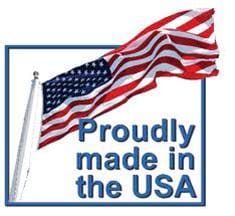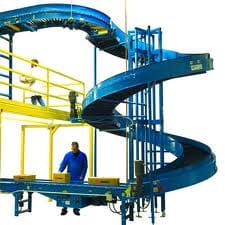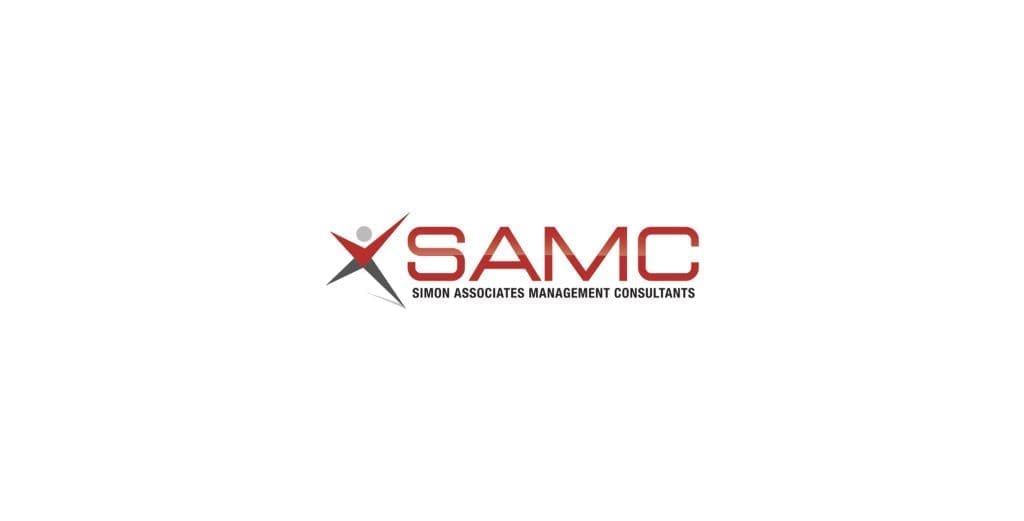 As I was recently discussing trends with colleagues, it became clear to me as a Vistage International speaker (having led over 140 presentations for Vistage and TEC since 2007) that CEOs from around the country can provide a very interesting research base for seeing and hearing changes in the American and even global economy.
As I was recently discussing trends with colleagues, it became clear to me as a Vistage International speaker (having led over 140 presentations for Vistage and TEC since 2007) that CEOs from around the country can provide a very interesting research base for seeing and hearing changes in the American and even global economy.
As leaders of mid-market companies responding to changing times, these CEOs are a touch point to capture some of the trends currently emerging. They might not answer a survey intended to capture the changes. They may not even be aware of how their own situation reflects a larger pattern. (I am often their connection to what is happening in different industries around the country.)
But their reactions are particularly important when evaluating what’s really happening at companies from coast to coast.Here are some of the Top 10 themes that I’ve heard over the past few months, which I believe will pave the way for 2013 and beyond.
1. Blue Ocean Strategies® are really working. Having sold over 2 million copies since 2006, the “Blue Ocean Strategy” book has become an international phenomenon. But does it work? Too often when I give a workshop, people tell me they haven’t read the book. And even those who have read it say they have no idea how to implement the processes. But I have been doing Blue Ocean strategic exercises with clients since 2007 and have partnered with enough of them over the years to know that the theory and the process really do work.
More importantly, as a trend to watch, a greater number of people are coming to me seeking “Blue Ocean” solutions instead of me going to them. Based on that, I would predict that even more businesses will implement “Blue Ocean” solutions in 2013. I have become a real believer, no longer just a fan. And it looks like many other people are catching the wave, as well.
Let me share three examples. One company had invented water filler stations — hydration stations — that could easily fit on top of water fountains, their traditional product line. Yet, new purchases of the filler stations were slow. Neither facilities directors nor building owners, their traditional buyers, could see the value in the water bottle fillers. Instead of pushing in the old direction, the company discovered that there was an entirely new audience awaiting their innovation, namely the sustainability directors at colleges and universities and at companies that were going “green.” Their unmet, Blue Ocean needs included eliminating the plastic water bottle from landfills. The water filler stations were just the answer creating demand for ways to enable people to fill their refillable water bottles. Hence, a new market with new strategies was opening.a trend to watch, a greater number of people are coming to me seeking “Blue Ocean” solutions instead of me going to them. Based on that, I would predict that even more businesses will implement “Blue Ocean” solutions in 2013. I have become a real believer, no longer just a fan. And it looks like many other people are catching the wave, as well.
In another case, a financial services client discovered that a growing unmet need in the market was the absence of a pool of young, well-trained brokers due to the fact that the training programs of the Merrill Lynches of the world had shrunk or disappeared. The financial service firm could only grow if it could build a base of new brokers. Where were they? Trying to find training programs. For the financial services firm, the opportunity was in creating the training for the next generation of brokers.
In a third case, a client developed a very innovative technology to improve wall construction in new home building. They realized that the market for new homes in the near-term might be limited. The value of its technology to repair and remodel homes was tremendous. How to create demand was the challenge, but a very real opportunity awaited them. What they realized was that the distribution channel was shifting online as Amazon was going big into the B2B world. Younger contractors, in particular, were shopping on their iPhones at Amazon. An Amazon store, and E-commerce, in general, became very viable and exciting new ways to drive demand and promote “construction instruction” to help young contractors use the right materials with best practices.
2. Off-label use of products and technology is creating a new R&D department — the user.  Anyone who discovers a new use for a technology or a product is not only changing its purpose, he or she is showing the world how easy this is to do. YouTube videos, homemade but very credible, can do your marketing for you. It is now so easy to tell people about a product — the good, the bad and the ugly. One client received a YouTube video showing how someone had repurposed his building product for a completely different use. He had never thought about this new use, but it was something that could open a whole new market for him. Imagine! Customers are now driving the repurposing of a product and telling the manufacturer how to market it.
Anyone who discovers a new use for a technology or a product is not only changing its purpose, he or she is showing the world how easy this is to do. YouTube videos, homemade but very credible, can do your marketing for you. It is now so easy to tell people about a product — the good, the bad and the ugly. One client received a YouTube video showing how someone had repurposed his building product for a completely different use. He had never thought about this new use, but it was something that could open a whole new market for him. Imagine! Customers are now driving the repurposing of a product and telling the manufacturer how to market it.
3. Made in the USA is starting to catch on. A former client realized that the time and cost of  shipping from China was itself a commodity. By buying the manufacturing equipment from China and setting up a factory in the U.S., he was able to transform his entire business model. His domestic labor and delivery costs were higher. But by manufacturing in America, he could now push product through faster at a price point that was actually more competitive than those who had to ship from Chinese factories. Several other clients are discussing similar changes in their manufacturing production systems. And following the news, you can see that other companies are starting to embrace this emerging trend.
shipping from China was itself a commodity. By buying the manufacturing equipment from China and setting up a factory in the U.S., he was able to transform his entire business model. His domestic labor and delivery costs were higher. But by manufacturing in America, he could now push product through faster at a price point that was actually more competitive than those who had to ship from Chinese factories. Several other clients are discussing similar changes in their manufacturing production systems. And following the news, you can see that other companies are starting to embrace this emerging trend.
4. Sustainability directors are an entirely new market where demand is evident but solutions are harder to come by. As I mentioned above, there is a growing market around environmental sustainability and energy conservation. People would repeatedly ask me if it was a real  market. Yes, it is. Entirely new sustainability directors have jobs in which they are actively working to reduce water utilization, energy consumption, heat loss and landfills. They are opening up for manufacturers who never thought of them as prospective customers.
market. Yes, it is. Entirely new sustainability directors have jobs in which they are actively working to reduce water utilization, energy consumption, heat loss and landfills. They are opening up for manufacturers who never thought of them as prospective customers.
There was a company on the West Coast who specialized in roofing. He realized that the momentum was shifting from simply replacing an old roof to putting on roofs that reduced energy utilization. He never missed a beat during the 2008 recession. As we are seeing, people in this very broad niche have unmet needs, and companies are slowly starting to realize that they could be good customers, if companies could create innovative solutions to save energy, eliminate plastic bottle use and reduce water consumption, as well as other things of importance to people like sustainability directors. Given the slow home-building market, several companies this year are discovering that universities can be important markets for products that can transform energy and water utilization in innovative ways. We expect this trend to grow in 2013.
5. Culture Change has become a big area of concern influencing organizations in many different industries. At Simon Associates Management Consultants (SAMC), we specialize in culture change. Interestingly, we are hearing a growing buzz in areas that we have not heard from before, particularly in healthcare, but also in education and in local communities. Administrators at many  hospitals tell us that they need to change their culture, whether the focus is on engaging physicians or improving quality. But often they aren’t sure what their culture is, much less how to change it in the future. And what would the “right” culture be?
hospitals tell us that they need to change their culture, whether the focus is on engaging physicians or improving quality. But often they aren’t sure what their culture is, much less how to change it in the future. And what would the “right” culture be?
Besides healthcare, we hear similar concerns from people running K-12 schools, where school culture is being recognized as something to reckon with — now. And in local communities, cities such as San Jose, California and others all around the country, there is a theme emerging about how to engage their citizens in the hard choices that have to be made concerning their budgets. Engagement is not simply a word, but something really happening as tax revenues are shrinking and demands for services are rising. Decisions need to be far more collaborative than ever before. Cultures must change and are doing so, whether we are aware of it or not. Every Voice Engaged is a new not-for-profit coming out of Innovation Games® that we are working with to help change community cultures to build engagement.
6. Family Firms present an interesting arena to spot trends. In the U.S., where 10 percent of our companies are family firms, the third and fourth generations are beginning to move into firms that are  over 100 years old. In Eastern European countries, such as the Czech Republic, just recreating the family firm is a big initiative. And family firms themselves have their own unique cultures. They have proven resilient in times of economic decline, but they don’t necessarily take the risks others might to expand their markets. The work that we have been doing with family firms as simply “firms” has been very interesting. They typically are migrating to professional managers and shifting their focus to the “firm” more than the family. For the third and fourth generations, there is often the realization that just because they are family, this may not be enough to meet the evolving needs of a company facing the fast-changing times of today.
over 100 years old. In Eastern European countries, such as the Czech Republic, just recreating the family firm is a big initiative. And family firms themselves have their own unique cultures. They have proven resilient in times of economic decline, but they don’t necessarily take the risks others might to expand their markets. The work that we have been doing with family firms as simply “firms” has been very interesting. They typically are migrating to professional managers and shifting their focus to the “firm” more than the family. For the third and fourth generations, there is often the realization that just because they are family, this may not be enough to meet the evolving needs of a company facing the fast-changing times of today.
7. Healthcare is in turmoil. Everything is changing in healthcare: reimbursements, billing procedures, expectations of how and where to treat patients, major payer procedures, patient values and  behaviors, the healthcare worker, the value of physicians entering the market and those maturing in it — you name it. And all of these changes are creating havoc with the predictability that is the core culture of healthcare professionals — regardless of the type of care they are involved in — from hospitals or private practice to family practitioners or specialists to nurses or administrators. This trend will likely pick up speed in 2013, which also means hospitals will need to actively manage their changes to drive positive outcomes.
behaviors, the healthcare worker, the value of physicians entering the market and those maturing in it — you name it. And all of these changes are creating havoc with the predictability that is the core culture of healthcare professionals — regardless of the type of care they are involved in — from hospitals or private practice to family practitioners or specialists to nurses or administrators. This trend will likely pick up speed in 2013, which also means hospitals will need to actively manage their changes to drive positive outcomes.
8. Distributors and middlemen are under siege. In many of the CEO workshops I led this year, there were usually several individuals present who owned distribution companies representing a range of industries. Yet regardless of their product lines — HVAC, roofing supplies, electrical distributors,  refrigeration, optical equipment — these distributors faced unprecedented changes in their roles and how these roles relate to the fundamental business model. They were also changing the supply chain itself. Some had reduced their inventory and put products in catalogs or online. If customers wanted something, they would order it for them. From the manufacturers’ perspective, they were no longer distributing merchandise and getting product from manufacturing to end-user. In response, manufacturers were going direct to the end-user or the contractor.
refrigeration, optical equipment — these distributors faced unprecedented changes in their roles and how these roles relate to the fundamental business model. They were also changing the supply chain itself. Some had reduced their inventory and put products in catalogs or online. If customers wanted something, they would order it for them. From the manufacturers’ perspective, they were no longer distributing merchandise and getting product from manufacturing to end-user. In response, manufacturers were going direct to the end-user or the contractor.
Right in the middle of this is Amazon. Amazon is not only transforming the B2C consumer buying process, it is also becoming a very strong retailer in the B2B market sector, as I noted earlier. When you add to that the e-commerce sites established by the manufacturers themselves, as well as vendors with online sales and the role of the smart phone/iPhone, it readily becomes apparent that the entire supply chain model is under siege. What then is the new role of distributors? Are they merely another channel competing with others that are often much easier to access?
9. End Users are transforming the buying process. The other side of the distributors’ problem is that the consumer, contractor and builder are all now buying direct. The long tail of the Internet is  coming into play, so that end users across the country can influence a product and a manufacturer’s sales in ways unseen before. Local no longer exists — everything is now national if not global. This was the case in each of the examples shared above. In one particular case, the contractors bought directly from the manufacturer using their iPhone to text message an order. And Twitter has made it easy for word of mouth to go viral. We thought consumers’ emails and texts to contractors about buying products and having them shipped directly to them seemed unusual. That is until we saw the scope of the inquiries and spoke with other manufacturers. There are so many changes occurring here, it will be fascinating to watch the ripple effect across so many industries next year.
coming into play, so that end users across the country can influence a product and a manufacturer’s sales in ways unseen before. Local no longer exists — everything is now national if not global. This was the case in each of the examples shared above. In one particular case, the contractors bought directly from the manufacturer using their iPhone to text message an order. And Twitter has made it easy for word of mouth to go viral. We thought consumers’ emails and texts to contractors about buying products and having them shipped directly to them seemed unusual. That is until we saw the scope of the inquiries and spoke with other manufacturers. There are so many changes occurring here, it will be fascinating to watch the ripple effect across so many industries next year.
10. Entrepreneurs are everywhere.They probably always have been. I taught Entrepreneurship at Washington University in St. Louis not long ago. The power of the start-up should not be underestimated. Now, more than ever, start-ups are abundant. Young people, fresh out of their MBAs and others no  longer employed in large companies are simply going the start-up route. Some will work and some won’t. This really doesn’t matter as unemployment and the lack of mid-level jobs are pushing people to pursue their passions, their hobbies or their expertise. This isn’t really so new. What is new are the ways in which entrepreneurs can create new business, off-line and online. We hear about the Groupons, but there are many more in the queue that aren’t famous yet.
longer employed in large companies are simply going the start-up route. Some will work and some won’t. This really doesn’t matter as unemployment and the lack of mid-level jobs are pushing people to pursue their passions, their hobbies or their expertise. This isn’t really so new. What is new are the ways in which entrepreneurs can create new business, off-line and online. We hear about the Groupons, but there are many more in the queue that aren’t famous yet.
New types of markets are emerging, providing comfort travel solutions instead of just travel pillows, and new types of building wraps that remove moisture not just seal the surface. Or showerhead companies developing new bathing experiences. Several clients are rethinking what they sell. Is it a product or an experience? Can they convert one-time product purchases into longer-term “subscriptions” or “rentals” or retainers for sustainable revenue streams? “What do people really want?” has always been the question. But now we need to ask “What are they searching for?” and then use crowd sourcing to help us find the answers, faster. What will be the next clever solutions?
So what does it all mean? It means the times, they are a-changin’. And the changes themselves are happening at a much more rapid pace than in years past. We all need to adapt and change with them, and we have no time to lose.
In one company, an executive asked me when the changes would give him a moment to breathe and I had to bite my tongue in response. These trends clearly show us that the world is not only getting smaller and faster, it’s being driven by the agile and the innovative, not the people who cling to the old, always-done-it-that-way approaches.
Some businesses will stay ahead of the curve, see impactful changes coming, and take advantage of them. The really interesting ones are creating their own new markets with fresh ideas and innovative solutions. Still others will get left behind. The difference? CEOs and other leaders who exhibit the following traits stand the best chance of success:
- the courage to try new ways of doing business: they “see, feel and think” differently
- the ability to recognize what consumers and other businesses need and want now: they pay close attention to the unmet needs that people are telling them about
- the resources and drive to do whatever it takes to give potential customers and partners what they want: they have an idea and make it happen
- the openness to try a “Blue Ocean” solution or two, swimming ahead of the competition: this is not easy, but is so very necessary in today’s changing times.
Regardless of your industry, it’s a whole new world, which more and more demands a willingness to change and adapt. And while change is pain, SAMC is ready to help any business navigate those changes in ways that ultimately can result in a more rewarding 2013.




